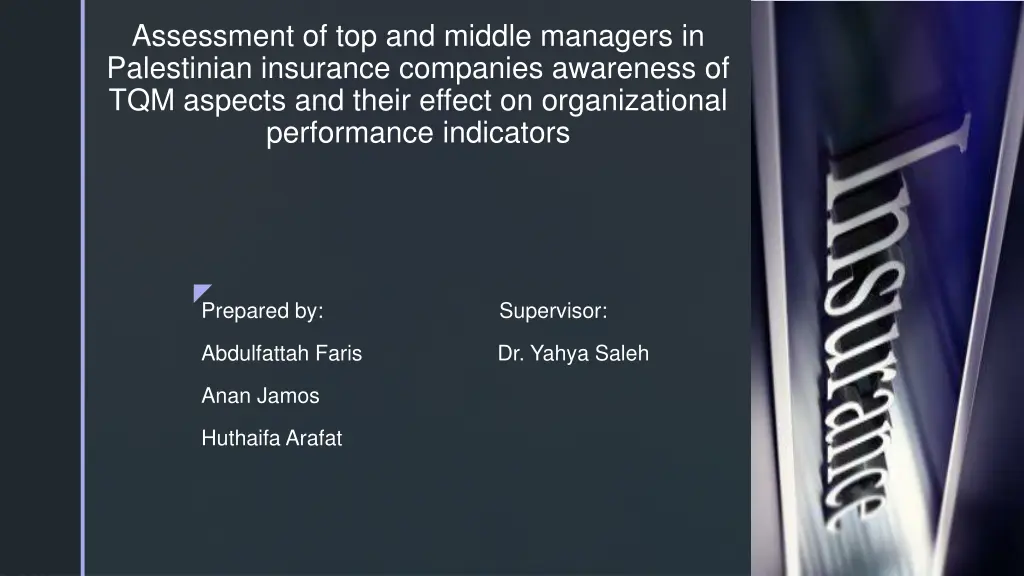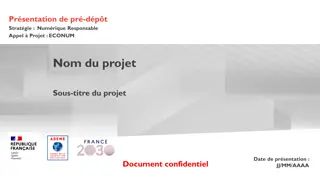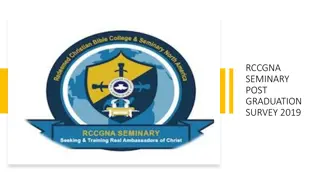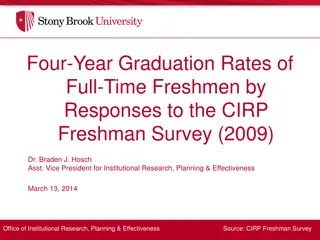
Assessment of TQM Awareness Among Top and Middle Managers in Palestinian Insurance Companies
Explore the impact of TQM awareness on organizational performance in Palestinian insurance companies. Assess levels of awareness, obstacles, and demographic influences. Investigate awareness on TQM concepts, importance, implementation techniques, and performance indicators.
Download Presentation

Please find below an Image/Link to download the presentation.
The content on the website is provided AS IS for your information and personal use only. It may not be sold, licensed, or shared on other websites without obtaining consent from the author. If you encounter any issues during the download, it is possible that the publisher has removed the file from their server.
You are allowed to download the files provided on this website for personal or commercial use, subject to the condition that they are used lawfully. All files are the property of their respective owners.
The content on the website is provided AS IS for your information and personal use only. It may not be sold, licensed, or shared on other websites without obtaining consent from the author.
E N D
Presentation Transcript
Assessment of top and middle managers in Palestinian insurance companies awareness of TQM aspects and their effect on organizational performance indicators Prepared by: Supervisor: Abdulfattah Faris Dr. Yahya Saleh Anan Jamos Huthaifa Arafat
Outlines Introduction Objectives Research questions Hypotheses and conceptual model Questionnaire Population and sample size Data analysis Statistical differences in awareness Correlation and regression Conclusions and recommendations
Introduction The aim of this research is to explore the main factors affecting TQM awareness and implementation in Palestinian insurance companies, examining the relationship between TQM awareness and organizational performance and to submit a comprehensive framework for TQM awareness for the development of Palestinian insurance companies.
Objectives Assessing the level of awareness of TQM implementation as perceived by top and middle management of Palestinian insurance companies. Investigating the awareness of the impact of TQM implantation on organizational performance indicators. Identifying the main obstacles to implementing TQM. Assessing the impact of demographic variables on awareness of top and middle managers in TQM principles.
Research questions What is the level of awareness of top and middle management to the concept, importance, implementation techniques and implementation obstacles of TQM in the insurance sector. To what level does the difference in demographic characteristics affect the extent to which top and middle management understand the concept, importance, application and constraints of TQM in the insurance sector What is the impact of top and middle management awareness of TQM on the organizational performance
Questionnaire The questionnaire consists of 54 questions divided into six main sections: The first section collects demographic data. 1. The second section measures the extent to which the top and middle management are aware of the concept of TQM. 2. The third section measures the extent to which the top and middle management are aware of the importance of TQM. 3.
Questionnaire The fourth section measures the role of top and middle management in the implementation of TQM in the insurance sector. 4. The fifth section discusses factors that obstruct the application of TQM. 5. The sixth section measures the impact of management awareness of TQM aspects on organizational performance. 6.
Population and sample size The study population consists of the all branch managers and heads of departments (Middle management) and all top management members. 456 middle managers. 90 top management members. The total population is 546 member. The approximated sample size is 102.
Data analysis In data analysis, we used several statistical analysis methods including kruskal wallis to study the statistical differences between the demographic variables and TQM awareness level and the effect of TQM awareness on organizational performance indicators. Regression to obtain the relation between Awareness aspects of TQM and the level of awareness of TQM, study the relation between TQM awareness level and the effect of TQM on organizational performance. Correlation test to study the level of correlation between TQM awareness level and their effect on organizational performance.
Statistical differences in awareness aspects According to gender Awareness aspects Gender P-Value 0.816 Concept of TQM 0.223 Importance of TQM 0.533 Implementation of TQM 0.287 Implementation obstacles 0.039 KPIs Note that difference is significant at the 0.05 level
Statistical differences in awareness aspects According to age Awareness aspects Age P-Value 0.077 Concept of TQM 0.672 Importance of TQM 0.186 Implementation of TQM 0.386 Implementation obstacles 0.064 KPIs Note that difference is significant at the 0.05 level
Statistical differences in awareness aspects According to education level Awareness aspects Education level P-Value 0.124 Concept of TQM 0.138 Importance of TQM 0.749 Implementation of TQM 0.826 Implementation obstacles 0.002 KPIs Note that difference is significant at the 0.05 level
Statistical differences in awareness aspects According to management level Awareness aspects Management level P-Value 0.002 Concept of TQM 0.001 Importance of TQM 0.006 Implementation of TQM 0.104 Implementation obstacles 0.000 KPIs Note that difference is significant at the 0.05 level
Statistical differences in awareness aspects According to experience Awareness aspects Experience P-Value 0.001 Concept of TQM 0.078 Importance of TQM 0.403 Implementation of TQM 0.648 Implementation obstacles 0.002 KPIs Note that difference is significant at the 0.05 level
Statistical differences in awareness aspects According to salary Awareness aspects Salary P-Value 0.014 Concept of TQM 0.002 Importance of TQM 0.029 Implementation of TQM 0.588 Implementation obstacles 0.001 KPIs Note that difference is significant at the 0.05 level
Statistical differences in organizational performance indicators According to gender Organizational performance indicators Gender P-Value 0.021 Financial performance 0.205 Employee performance 0.056 Operational performance 0.825 Customer satisfaction Note that difference is significant at the 0.05 level
Statistical differences in organizational performance indicators According to age Organizational performance indicators Age P-Value 0.017 Financial performance 0.091 Employee performance 0.088 Operational performance 0.007 Customer satisfaction Note that difference is significant at the 0.05 level
Statistical differences in organizational performance indicators According to education level Organizational performance indicators Education level P-Value 0.092 Financial performance 0.103 Employee performance 0.174 Operational performance 0.022 Customer satisfaction Note that difference is significant at the 0.05 level
Statistical differences in organizational performance indicators according to management level Organizational performance indicators Management level P-Value 0.001 Financial performance 0.000 Employee performance 0.000 Operational performance 0.023 Customer satisfaction Note that difference is significant at the 0.05 level
Statistical differences in organizational performance indicators According to experience Organizational performance indicators Experience P-Value 0.068 Financial performance 0.009 Employee performance 0.003 Operational performance 0.001 Customer satisfaction Note that difference is significant at the 0.05 level
Statistical differences in organizational performance indicators According to salary Organizational performance indicators Salary P-Value 0.005 Financial performance 0.002 Employee performance 0.038 Operational performance 0.011 Customer satisfaction Note that difference is significant at the 0.05 level
Correlation Independent variable Dependent variable Awareness of TQM principles Pearson corr.(r) P-value Type of correlation 0.773 0.000 Positive Financial performance 0.824 0.000 Positive Operational performance 0.799 0.000 Positive Employee performance 0.480 0.000 Positive Customer satisfaction
Correlation Financial Operational Employee Customer Factor performance performance Performance satisfaction 0.636 0.713 0.725 0.545 Concept 0.000 0.000 0.000 0.000 0.721 0.792 0.714 0.398 Importance 0.000 0.000 0.000 0.000 0.592 0.667 0.707 0.400 Implementation 0.000 0.000 0.000 0.000 0.652 0.627 0.582 0.300 Obstacles 0.000 0.000 0.000 0.002
Regression Regression of company s KPIs depending on the awareness of TQM concept Model Adjusted ?2 S ?2 66.83% 66.52% 0.248 1 Regression equation: KPI awareness equation = AVG.KPI = 1.596 + 0.6035 AVG.AW
Regression Regression of company s KPIs depending on the awareness of TQM importance Model Adjusted ?2 S ?2 65.6% 66.93% 0.254 2 Regression equation: KPI awareness equation = AVG.KPI = 1.315 + 0.6588 AVG.IM
Regression Regression of company s KPIs depending on the awareness of TQM implementation Model Adjusted ?2 S ?2 56.4% 55.98% 0.285 3 Regression equation: KPI awareness equation = AVG.KPI = 1.293 + 0.6882 AVG.IMP
Regression Regression of company s KPIs depending on the awareness of TQM implementation obstacles Model Adjusted ?2 S ?2 47.62% 47.11% 0.315 4 Regression equation: KPI awareness equation = AVG.KPI = 2.407 + 0.4072 AVG.OBS
Regression Regression of financial performance depending on the awareness of TQM Model Adjusted ?2 S ?2 63.59% 62.14% 0.3955 5 Regression equation: KPI awareness equation = AVG Fin = -0.166 + 0.060 AVG.AW + 0.556 AVG.IM + 0.160 AVG.IMP + 0.2747 AVG.OBS
Regression Regression of operational performance depending on the awareness of TQM Model Adjusted ?2 S ?2 55.96% 54.22% 0.3417 6 Regression equation: KPI awareness equation = AVG OP = 0.678 + 0.3561 AVG.AW + 0.0174 AVG.IM + 0.256 AVG.IMP + 0.1499 AVG.OBS
Regression Regression of employee performance depending on the awareness of TQM Model Adjusted ?2 S ?2 66.49% 65.16% 0.2826 7 Regression equation: KPI awareness equation = AVG EMP = 0.812 + 0.3695 AVG.AW + 0.0170 AVG.IM + 0.3594 AVG.IMP + 0.0856 AVG.OBS
Regression Regression of customer satisfaction depending on the awareness of TQM Model Adjusted ?2 S ?2 30.07% 27.30% 0.3523 8 Regression equation: KPI awareness equation = AVG CUST = 2.683 + 0.3507 AVG.AW + 0.049 AVG.IM + 0.074 AVG.IMP - 0.0519 AVG.OBS
Regression Regression of the awareness of the effect of all of the TQM factors on the company s KPIs Model Adjusted ?2 S ?2 84.74% 84.13% 0.1711 1 Regression equation: KPI awareness equation = 0.743 + 0.2257 AVG.AW + 0.3196 AVG.IM + 0.1749 AVG.IMP + 0.1152 AVG.OBS
Conclusions Top and middle managers in Palestinian insurance companies showed good knowledge in TQM aspects and its impact on organizational performance. 1. Managers with high educational, Managerial and experience level showed better knowledge in TQM in general, while factors like age has no statistical difference in the Awareness of TQM. 2. Top managers showed lack of trust in the potential advantages of TQM due to the weak partnership between competitors 3. Awareness of obstacles against implementing TQM proved to be significant and widespread among top and middle managers. 4.
Conclusions Financial and administrative resources spent on the implementation and development of TQM are insufficient. 5. According to the correlation matrix, the relation between awareness of importance and operational performance scored the highest score, which conforms to the results obtained in 3 and 4. 6. The second highest score was between awareness of concept and employee performance. 7. The third highest score was between awareness of importance and financial performance. 8.
Recommendations Managers must set a clear vision regarding the use of TQM and develop appropriate strategies to do so. 1. Management must provide the necessary infrastructure for advanced applications of TQM. 2. Management devote more financial resources for the development of TQM. 3. Increase employee awareness, familiarize all issues and obstacles related to TQM implementation, and removing uncertainty. 4.






















